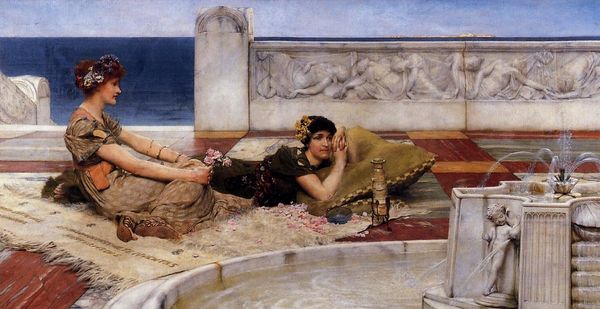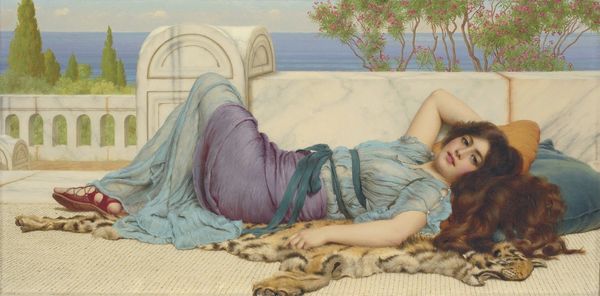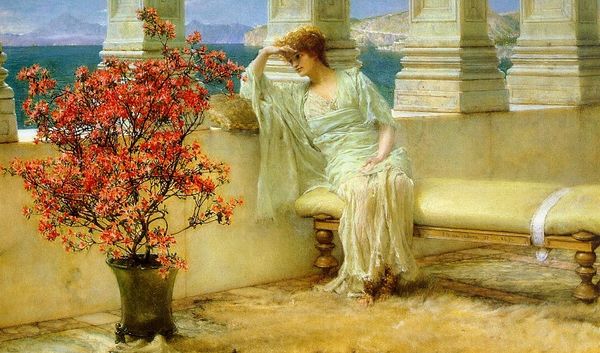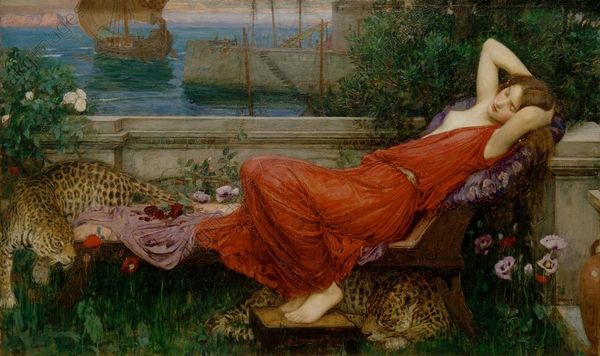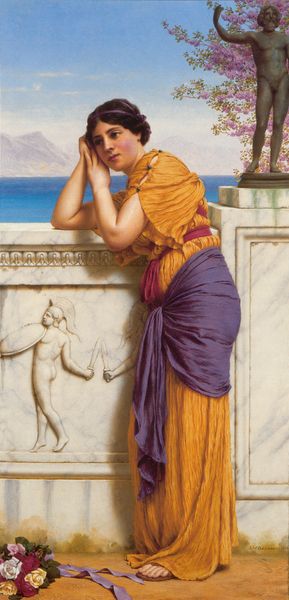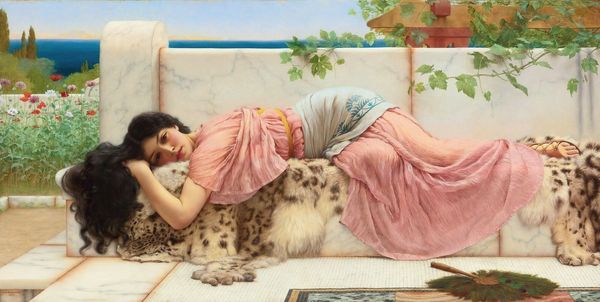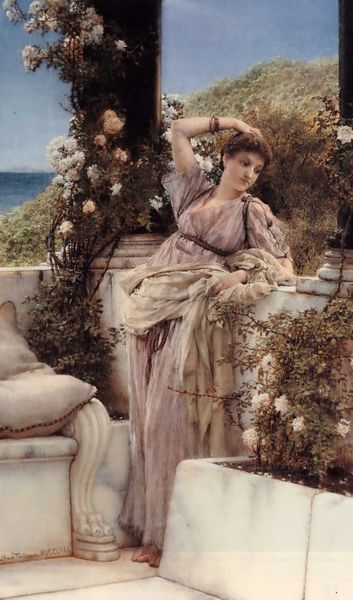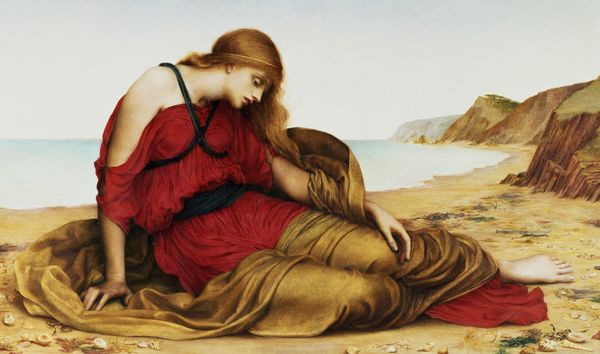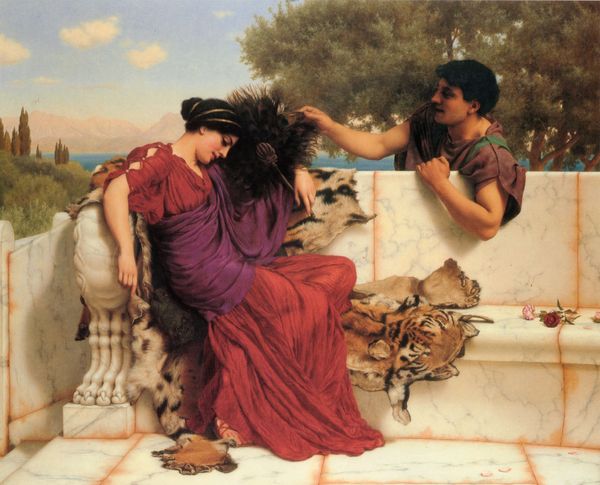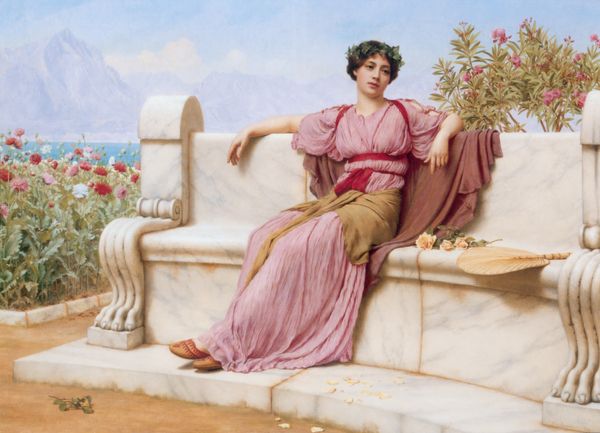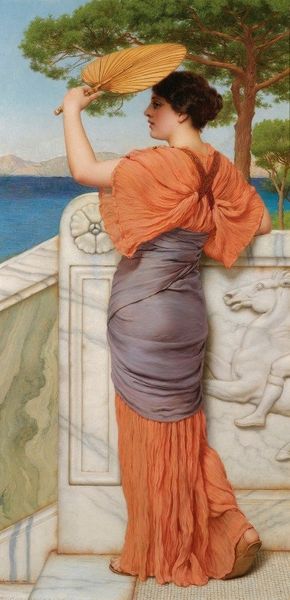
Dimensions: 40 x 80 cm
Copyright: Public domain
Editor: This is John William Godward's "Noon Day Rest," painted in 1910, using oil paint. She seems so relaxed! I'm really drawn to the way the fabric drapes. What can you tell me about this piece? Curator: Notice how Godward uses oil paint to meticulously depict the textiles and the marble. Think about the labor involved. The smooth, idealized surfaces deny any evidence of the artist's hand, effectively erasing the process of production. How does that relate to the leisure the woman seems to be enjoying? Editor: So you're saying the painting itself performs a kind of… obscuring? I hadn't considered that. The marble looks almost unreal! Curator: Exactly. Consider the context. This was painted at a time of intense industrial production. Godward, though working in the 20th century, obsessively recreated a vision of antiquity, offering a fantasy of escape from modern labor through depictions of leisure. What about that tiger skin? Editor: A sign of wealth, obviously. Maybe of dominance? And... imported materials? Curator: Indeed. The animal skin speaks to trade, consumption, and perhaps even a subtle form of colonial power. Even the pigments would have been carefully sourced, hinting at a global network of resource extraction. The painting isn't just pretty; it's embedded in material realities. Does examining these elements change how you view the work? Editor: Absolutely. I saw a beautiful scene, but now I'm thinking about global trade, labor, and the artist's choices in constructing this idyllic escape. Thanks for pointing out the significance of materials and context! Curator: It is vital to not take art at face value and question production methods and the conditions behind this image.
Comments
No comments
Be the first to comment and join the conversation on the ultimate creative platform.
